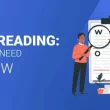Introduction
If you’ve just created a website and can’t find it on Google, you’re not alone. Many people build beautiful websites and expect them to instantly appear in search results. But it doesn’t work like magic. There are steps you must follow to make your site visible to Google and, most importantly, to the people searching for what you offer.
The good news is that getting your website to show up on Google is not hard. You don’t need to be a tech expert. You just need to understand how Google works and take some smart actions. In this article, we’ll walk through those steps in simple, easy-to-follow language that even a 10th grader can understand.
Rise of Google Search Visibility Needs
In today’s digital world, having a website is not enough—people need to find it easily. With millions of websites online, competition for visibility on Google has grown rapidly. Businesses, bloggers, and professionals all want their sites to appear on the first page of search results because that is where most clicks happen. This rise in the need for Google search visibility has made SEO (Search Engine Optimization) one of the most important parts of running a successful website.
Why Isn’t My Website on Google?
Before we learn how to get your website on Google, let’s first understand why it might not be showing.
Here are a few common reasons:
- Google hasn’t found your website yet
- Your site is new and not indexed
- There are no other websites linking to yours
- Your website has errors that block Google from crawling it
- Your site is set to “private” or “noindex”
- You haven’t submitted your website to Google
Now, let’s talk about what you can do to solve these problems.
Benefits of Appearing on Google Search
Getting your website to show up on Google brings many benefits. It helps attract more visitors without paying for ads, which can save money in the long run. Higher visibility also increases brand awareness, as people are more likely to trust websites that appear on the first page. For businesses, it means more potential customers, more sales, and stronger online credibility. For bloggers and personal sites, it means more readers and wider reach.
Role of SEO in Google Rankings
SEO plays a central role in helping websites appear on Google. By using the right keywords, creating quality content, and optimizing technical elements like site speed and mobile design, websites can improve their rankings. Google’s algorithm looks for relevance, authority, and user experience, so following SEO best practices is key. Without SEO, even a well-designed website may remain hidden in search results, limiting its growth and reach.
How to Get Your Website to Show Up on Google Search
Step 1: Check If Your Website Is Indexed
The first thing to do is check whether Google already knows about your site. You can do this by typing the following into Google’s search bar:
- site:yourwebsite.com
For example, if your website is called mycoolsite.com, type:
- site:mycoolsite.com
If no results come up, it means Google has not indexed your site yet.
Step 2: Submit Your Website to Google
The fastest way to get your website on Google is by submitting it through Google Search Console. This is a free tool that lets you manage how your site appears in search results.
Here’s how:
- Go to Google Search Console
- Add and verify your website
- Submit your sitemap (usually found at yourwebsite.com/sitemap.xml)
A sitemap is a file that tells Google what pages are on your site. It makes it easier for search engines to find and understand your website.
Step 3: Make Sure Your Site Can Be Crawled
Google uses something called bots or crawlers to explore websites. These bots need access to your site in order to index it. Sometimes websites accidentally block these bots.
To check this:
- Make sure your website isn’t using a “noindex” tag in the code
- Check the robots.txt file (yourwebsite.com/robots.txt) and ensure it doesn’t block Google
- If using a website builder (like WordPress, Wix, or Squarespace), look in your site settings to ensure the site is public
If bots can’t read your site, Google won’t index it.
Step 4: Create Quality Content
Google loves content. The more helpful and original your content is, the more likely Google will show it in search results. Content can be:
- Blog posts
- Service pages
- Product descriptions
- How-to guides
- FAQs
Make sure your content:
- Uses your target keywords naturally
- Answers real questions people are searching for
- Is easy to read and not too long
- Uses simple language and short paragraphs
Write for people, not robots. If your content is helpful, Google will reward you.
Step 5: Use the Right Keywords
Keywords are the words people type into Google. For example, someone might search “how to fix a leaky faucet.” If your site talks about that, you want to use those words in your content.
To choose the right keywords:
- Think about what your audience is searching for
- Use tools like Google Keyword Planner or free keyword tools online
- Include keywords in titles, headings, and naturally in your text
Don’t stuff keywords all over the place. Google can tell when it feels forced. Just use them in a natural way that makes sense to the reader.
Step 6: Build Backlinks
A backlink is when another website links to yours. Google sees backlinks as a sign that your site is trustworthy and valuable.
To get backlinks:
- Ask friends or business partners to link to your site
- Write guest posts for other blogs
- Share your content on social media
- Join online communities and forums where you can post links
The more quality backlinks you have, the higher your site can rank in Google.
Step 7: Improve Your Site’s Speed and Mobile Friendliness
Google prefers websites that load fast and work well on mobile phones. If your site is slow or hard to use, Google might not rank it as high.
To improve speed and mobile usability:
- Use smaller image sizes
- Choose a fast web host
- Pick a mobile-friendly theme or template
- Use caching tools to reduce load time
You can test your site speed using free online tools. They’ll also give you tips on how to fix any problems.
Step 8: Update Your Site Regularly
Google likes fresh content. If your site hasn’t been updated in months, it may not rank as well. You can keep your site active by:
- Adding new blog posts
- Updating old articles
- Posting new products or services
- Fixing broken links
The more often you update your site, the more often Google will come back to check it.
Step 9: Use Descriptive Titles and Meta Descriptions
Your page titles and meta descriptions are what people see in search results. They also help Google understand what your page is about.
Make sure each page has:
- A clear, unique title (under 60 characters)
- A short meta description (under 160 characters) that describes the page
Use keywords in both but keep it natural and readable. This helps your site show up and encourages people to click.
Step 10: Be Patient and Consistent
Getting your website to show up on Google doesn’t happen overnight. It takes time. Google needs to find, understand, and trust your site before ranking it.
If you follow the steps above and keep creating useful content, your site will start showing up. Stay consistent, keep learning, and give it time.
Challenges in Ranking on Google
While the benefits are clear, ranking on Google is not always easy. The competition is high, and many websites are targeting the same keywords. Google also updates its algorithms regularly, which means strategies that worked before may not work today. Small websites often struggle against larger, established sites with higher authority. Creating consistent, high-quality content and building trusted backlinks can be time-consuming and require ongoing effort.
Future of Google Search Optimization
The future of getting websites to show up on Google will continue to evolve. Search engines are becoming smarter, focusing more on user intent, voice search, and mobile-friendly experiences. Websites that offer valuable, clear, and engaging content will have the best chance of ranking well. Using AI tools, structured data, and advanced SEO techniques will also become more common. In the coming years, websites that adapt to these changes will enjoy better visibility, more traffic, and stronger online success.
Conclusion
Getting your website to show up on Google is one of the most important things you can do for your business or blog. Thankfully, it’s not as hard as it seems.
First, check if your site is indexed. If not, submit it to Google Search Console. Make sure your site is crawlable, write helpful content with the right keywords, and get a few backlinks. Keep your website fast, mobile-friendly, and updated often. Use strong titles and descriptions, and don’t forget to be patient.
With the right steps and a little effort, your website can appear on Google and start attracting the visitors you’ve been hoping for.











